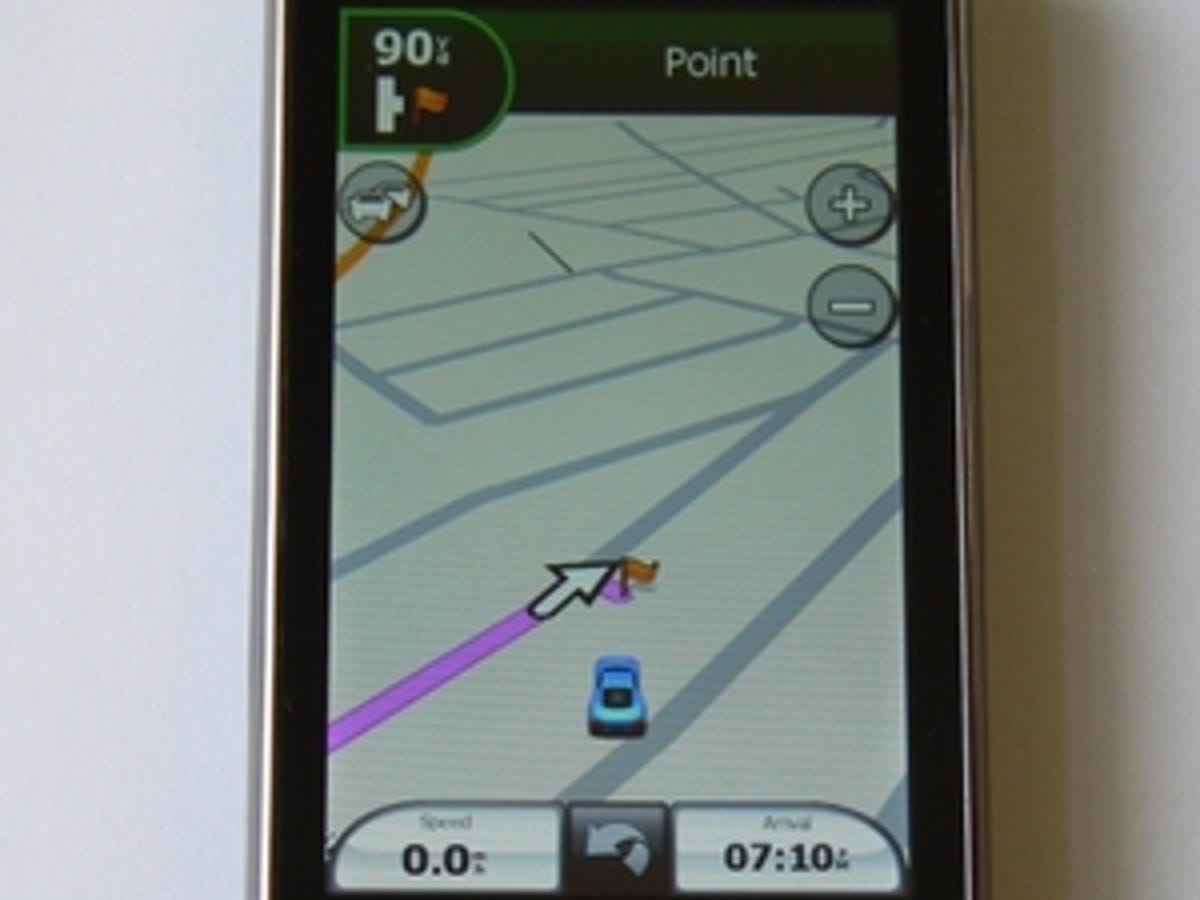 Why You Can Trust CNET
Why You Can Trust CNET Garmin-Asus Nuvifone M10 review: Garmin-Asus Nuvifone M10
The Garmin-Asus Nuvifone M10 smart phone offers excellent navigation software, sturdy build quality and a bright, crisp screen. Its Windows Mobile operating system isn't as slick as some competing offerings, but the M10 could be worth a look if you're planning a road trip
Now that pretty much every smart phone comes with built-in GPS, sat-nav manufacturers must be feeling the fear. Garmin is one of the few sat-nav makers trying to swim with the tide, partnering up with Asus to create a line of smart phones with its own sat-nav software built in.
The Good
The Bad
The Bottom Line
The previous two phones from this partnership -- the Nuvifone M20, which ran Windows Mobile, and the Linux-powered Nuvifone G60 -- were less than enthusiastically received. Has Garmin-Asus learnt from past mistakes with the Nuvifone M10? You can pick it up for about £300 SIM-free.
Sturdy brick
The M10 feels like a sturdy piece of kit. The face of the phone looks quite stylish too, with the screen circled by a chrome band. The battery cover on the rear has a rubberised finish that makes it easy to keep a grip on the phone, and Garmin-Asus has sensibly added a standard 3.5mm headphone jack to the top of the handset, so you can plug in your own cans. Sadly the M10 is rather bulky, however. It's about 1.5 times as thick as the iPhone 4, making it feel rather old-fashioned.
The M10's touchscreen takes up most of the front of the phone. It's a resistive, rather than capacitive, model, so you don't get support for multi-touch like you do on handsets such as the iPhone and HTC Legend. The display is also less responsive to the touch than the screens on those phones. At times, we had to resort to the telescopic stylus that's tucked away in a slot on the bottom right of the phone. The display does produce beautifully vibrant colours, however, and its resolution of 800x480 pixels means it looks incredibly crisp too.

As the M10 is likely to be used in your car, it comes with a swivelling windscreen mount and in-car charger. The swivel mount is very sturdy and we like the way it acts as a charging dock for the phone when it's clipped in place. You connect the micro USB cable from the car charger to the rear of the mount, rather than directly to the phone's USB port. This keeps the charging cable from getting in the way of the screen when you're driving.
Windows Mobile's a pile of...
The M10 is built on Microsoft's Windows Mobile 6.5 operating system. The OS feels slow and rather clunky, and there are too many fiddly menus dotted around for our liking. The other problem is that Microsoft will release the completely redesigned Windows Phone 7 OS later this year. Current Windows Mobile devices won't be able to upgrade to that new OS, leaving this handset's long-term future somewhat uncertain.
The phone's navigation software is launched by hitting the 'maps' virtual button that's permanently displayed at the bottom of the 'today' screen. The handset uses the same software as found on previous Garmin-Asus devices, with maps supplied by Navteq, which is now owned by Nokia. The software also supports live-traffic information, which it downloads over the mobile data network.
We found that the M10 was quick to get a lock on our position and was good at holding onto a signal even in heavily built-up areas around London. Planning our routes, even ones with multiple way points, was pretty straightforward, and, although navigation instructions are called out in a synthesised rather than recorded voice, the instructions are still clear and well timed. The handset speaker is loud enough to be heard above road noise even in the loudest of cars. Overall, we found the navigation side of the handset to be a cut above that of other phones we've used for this purpose.
The M10 certainly isn't lacking when it comes to connectivity either, offering HSDPA, Wi-Fi and Bluetooth support. Unfortunately, its call quality is less impressive. Even in areas with a strong signal, voices sound rather robotic. Its battery life isn't great either -- we got about a day and a half of use out of the phone before it needed a recharge.
Conclusion
While the Garmin-Asus Nuvifone M10 impresses with its navigation capabilities, it's just not a good-enough smart phone for us to really recommend it. That's especially true since the operating system will soon be rendered obsolete by Windows Phone 7.
Edited by Charles Kloet
